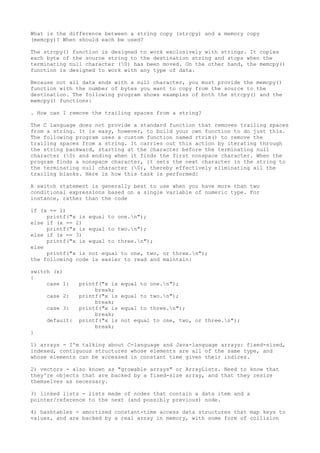The document discusses the differences between strcpy and memcpy functions in C. Strcpy copies bytes from a source string to a destination string until it reaches the null terminator, while memcpy copies a specified number of bytes between any types of data. It also provides examples of removing trailing spaces from a string and using switch statements instead of multiple else-if statements.

